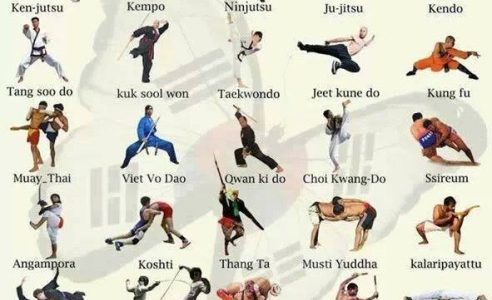Conventional Martial Arts And Modern Battle Sports: A Comprehensive Summary Of Their Distinct Distinctions
Conventional Martial Arts And Modern Battle Sports: A Comprehensive Summary Of Their Distinct Distinctions
Blog Article
Content By-McGinnis Sexton
When you think of martial arts, do you lean a lot more towards the traditional methods or the contemporary fight sporting activities? Each path provides one-of-a-kind advantages and experiences, shaped by their philosophies and training methods. Standard martial arts emphasize personal development and self-control, while modern battle sports concentrate on competition and performance. Recognizing these distinctions can lead you in choosing the appropriate method for your trip. Yet exactly how do these distinctions manifest in training and viewpoint?
The Viewpoint and Background Behind Typical Martial arts
While many people link martial arts with physical battle, the approach and history behind traditional martial arts run much deeper. You'll discover that these self-controls highlight personal growth, technique, and respect.
Originating from ancient methods, conventional martial arts were commonly developed for Self-Defense and spiritual advancement. They embody principles such as balance, consistency, and self-discipline, leading experts beyond plain battling abilities.
As you educate, you'll not just learn strategies yet additionally get insights into the culture and values that formed these arts. The routines and customs, typically given via generations, promote a feeling of neighborhood and belonging.
The Competitive Nature of Modern Combat Sports
Modern battle sporting activities have actually changed the landscape of martial arts right into a very affordable sector, where professional athletes face off in an examination of skill, method, and endurance.
You'll discover that competitors are frequently organized with rigorous guidelines and laws, ensuring justice and safety and security. These occasions draw in huge audiences, sustaining the enjoyment and strength of matches.
Professional athletes train carefully, not just for physical prowess yet additionally for psychological sturdiness, recognizing that every detail counts in the ring. The adrenaline thrill during competitions is palpable, as fighters push their limitations to declare victory.
Followers appreciate the athleticism and virtuosity included, making modern-day battle sporting activities a thrilling phenomenon that continues to advance and mesmerize fanatics all over the world.
Training Techniques and Techniques: A Relative Evaluation
The affordable environment of modern-day battle sporting activities demands ingenious training methods that vary significantly from conventional martial arts.
In modern training, you'll focus on specific methods, sparring, and conditioning, typically making use of drills that replicate real battle scenarios. You'll see an emphasis on measurable efficiency and regular competition to analyze your skills.
On the other hand, traditional martial arts focus on types, katas, and philosophical teachings, frequently stressing technique and regard over competition.
visit the up coming document is usually much less intense and might include repetitive method rather than real-time sparring.
While both methods construct skill and physical fitness, contemporary battle sports offer a much more vibrant and versatile training atmosphere, preparing you for instant challenges in the ring or cage.
Choose martial arts without fighting that straightens with your objectives and interests.
Conclusion
In picking in between typical martial arts and modern combat sports, it truly comes down to what you value many. If you're searching for personal development, technique, and a feeling of neighborhood, typical arts may be your finest fit. However if kajukenbo belts flourish on competition and real-time obstacles, modern-day battle sporting activities could be the method to go. Ultimately, both courses supply one-of-a-kind advantages, so it's all about straightening your training with your individual goals and rate of interests.
